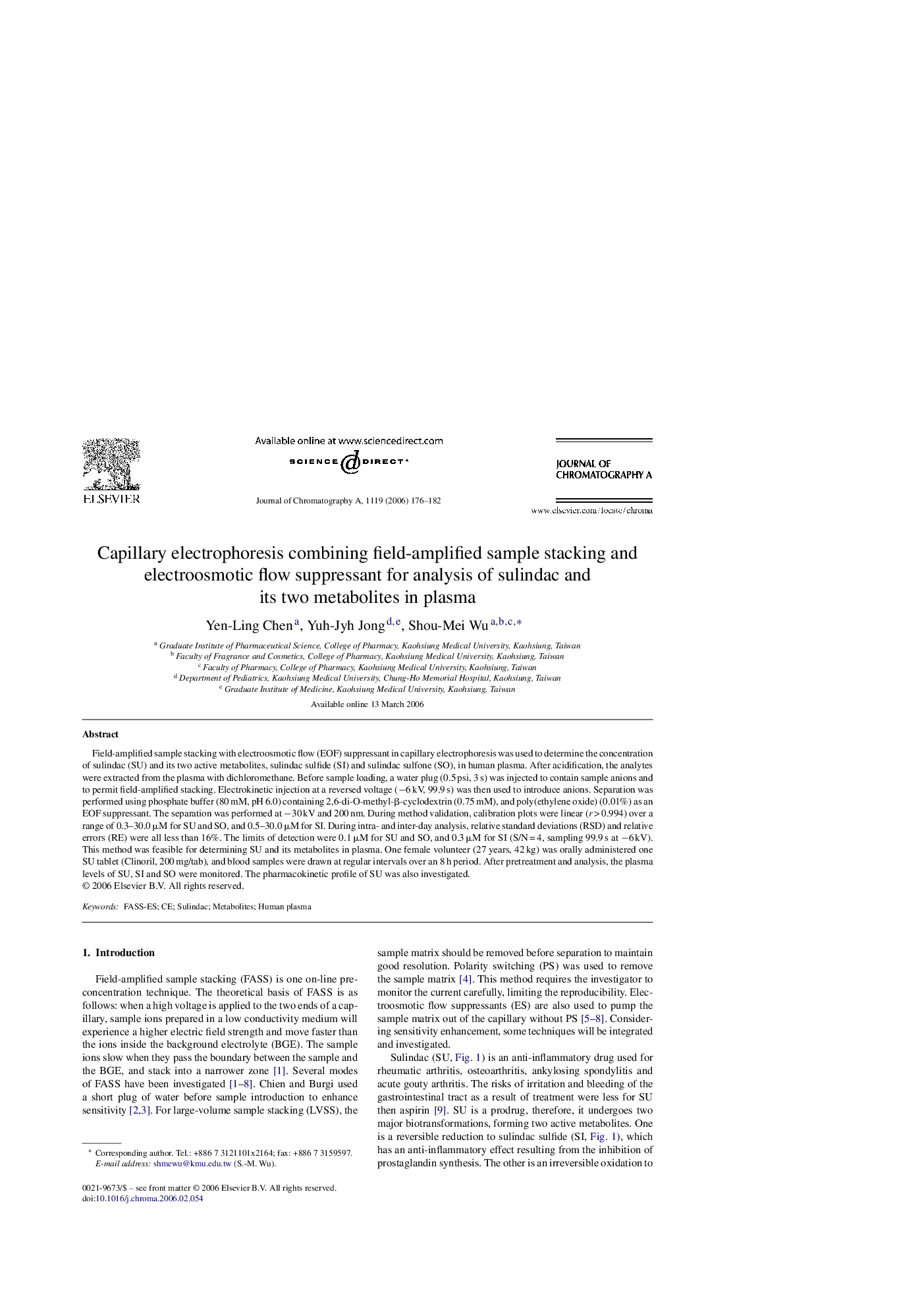| Article ID | Journal | Published Year | Pages | File Type |
|---|---|---|---|---|
| 1210164 | Journal of Chromatography A | 2006 | 7 Pages |
Field-amplified sample stacking with electroosmotic flow (EOF) suppressant in capillary electrophoresis was used to determine the concentration of sulindac (SU) and its two active metabolites, sulindac sulfide (SI) and sulindac sulfone (SO), in human plasma. After acidification, the analytes were extracted from the plasma with dichloromethane. Before sample loading, a water plug (0.5 psi, 3 s) was injected to contain sample anions and to permit field-amplified stacking. Electrokinetic injection at a reversed voltage (−6 kV, 99.9 s) was then used to introduce anions. Separation was performed using phosphate buffer (80 mM, pH 6.0) containing 2,6-di-O-methyl-β-cyclodextrin (0.75 mM), and poly(ethylene oxide) (0.01%) as an EOF suppressant. The separation was performed at −30 kV and 200 nm. During method validation, calibration plots were linear (r > 0.994) over a range of 0.3–30.0 μM for SU and SO, and 0.5–30.0 μM for SI. During intra- and inter-day analysis, relative standard deviations (RSD) and relative errors (RE) were all less than 16%. The limits of detection were 0.1 μM for SU and SO, and 0.3 μM for SI (S/N = 4, sampling 99.9 s at −6 kV). This method was feasible for determining SU and its metabolites in plasma. One female volunteer (27 years, 42 kg) was orally administered one SU tablet (Clinoril, 200 mg/tab), and blood samples were drawn at regular intervals over an 8 h period. After pretreatment and analysis, the plasma levels of SU, SI and SO were monitored. The pharmacokinetic profile of SU was also investigated.
